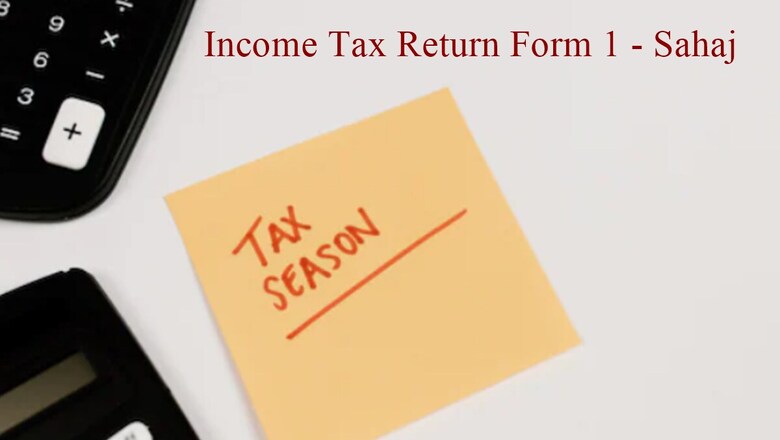
views
Income Tax Return FY 2022-23: Every year, individuals, businesses, and other entities whose income exceeds the minimum threshold set by the government are required to file their income tax returns. The due date for filing returns depends on the type of taxpayer and the nature of their income.
Income tax return forms have already been notified for Assessment Year 2023-24 (for income earned in 2022-23). As per the modified norms, individuals on whom search and seizure operations have been carried out by tax officials can now file revised returns under section 153 C on the basis of self-assessment of their undisclosed wealth in ITR-1.
In February, CBDT also made certain changes in ITR-1 form with regard to disclosure under Section 139 (1), which is filed voluntarily by persons having annual taxable income of less than Rs 2.5 lakh. These individuals will not be required to intimate in their ITR forms even if their fixed deposits exceed Rs 1 crore.
ITR Forms FY 2022-23
ITR-1 and ITR-4 are simpler forms that cater to a large number of small and medium taxpayers.
ITR-1 can be filed by an individual having income up to Rs 50 lakh and who receives income from salary, one house property and other sources (interest, etc). ITR-4 can be filed by individuals, Hindu Undivided Families (HUFs) and firms with total income up to Rs 50 lakh and having income from business and profession.
Even though the income tax department is yet to release the online ITR forms, it has released the offline ITR-1 and ITR-4 forms for filing the income tax return (ITR) for AY 2023-24 or financial year 2022-23.
The offline ITR-1 and ITR-4 forms came after the CBDT notified the same in February.
In the offline method, taxpayers are required to download the relevant form, fill it and then upload it on the department’s portal. However, in the online form, taxpayers can directly fill details about their incomes on the income tax portal and submit it. In both modes, the forms need to be verified by the taxpayers.
Who is eligible to file ITR-1 Sahaj?
According to the IT department, ITR-1 can be filed by a resident individual whose:
-Interest from Savings Accounts
-Interest from Deposits (Bank / Post Office / Cooperative Society)
-Interest from Income Tax Refund
-Interest received on Enhanced Compensation
- Any other Interest Income
- Family Pension
- Income of Spouse (other than those covered under Portuguese Civil Code) or Minor is clubbed (only if the source of income is within the specified limits as mentioned above).
Who Is Not Eligible To File ITR-1?
ITR-1 cannot be filed by any individual who:
- Is a Resident Not Ordinarily Resident (RNOR), and Non-Resident Indian (NRI)Has total income exceeding Rs 50 lakh
- Has agricultural income exceeding Rs 5000
- Has income from lottery, racehorses, legal gambling etc.
- Has taxable capital gains (short term and long term)
- Has invested in unlisted equity shares
- Has income from business or profession
- Is a director in a company
- Has tax deduction under section 194N of Income Tax Act
- Has deferred income tax on ESOP received from employer being an eligible start-up
- Owns and has income from more than one house property
- Is not covered under the eligibility conditions for ITR-1
What Documents Do You Need To File ITR-1?
You would need Form 16, house rent receipt (if applicable), investment payment premium receipts (if applicable). However, ITRs are annexure-less forms, so you are not required to attach any document (like proof of investment, TDS certificates) along with your return (whether filed manually or electronically). However, you need to keep these documents for situations where they need to be produced before tax authorities such as assessment, inquiry, etc..
How To File ITR 1 Sahaj Online?
The pre-filling and filing of ITR-1 service is available to registered users on the e-Filing portal. This service enables individual taxpayers to file ITR-1 either online through the e-Filing portal, or by accessing the offline utility. This user manual covers the process for filing ITR-1 through online mode.
ITR-1 has five sections that you need to fill before submitting it and one summary section where you are required to review your tax computation. The sections are as follows:
- Personal Information
- Gross Total Income
- Total Deductions
- Tax Paid
- Total Tax Liability
Read all the Latest Business News, Tax News and Stock Market Updates here















Comments
0 comment